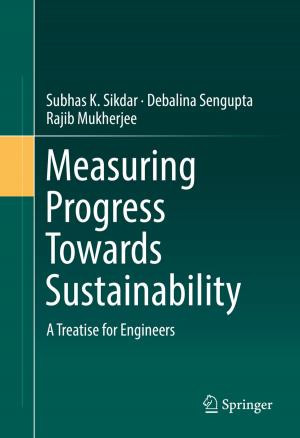Sensitivity Analysis in Remote Sensing
Nonfiction, Science & Nature, Mathematics, Applied, Science, Earth Sciences| Author: | Eugene A. Ustinov | ISBN: | 9783319158419 |
| Publisher: | Springer International Publishing | Publication: | April 1, 2015 |
| Imprint: | Springer | Language: | English |
| Author: | Eugene A. Ustinov |
| ISBN: | 9783319158419 |
| Publisher: | Springer International Publishing |
| Publication: | April 1, 2015 |
| Imprint: | Springer |
| Language: | English |
This book contains a detailed presentation of general principles of sensitivity analysis as well as their applications to sample cases of remote sensing experiments. An emphasis is made on applications of adjoint problems, because they are more efficient in many practical cases, although their formulation may seem counterintuitive to a beginner. Special attention is paid to forward problems based on higher-order partial differential equations, where a novel matrix operator approach to formulation of corresponding adjoint problems is presented.
Sensitivity analysis (SA) serves for quantitative models of physical objects the same purpose, as differential calculus does for functions. SA provides derivatives of model output parameters (observables) with respect to input parameters. In remote sensing SA provides computer-efficient means to compute the jacobians, matrices of partial derivatives of observables with respect to the geophysical parameters of interest. The jacobians are used to solve corresponding inverse problems of remote sensing. They also play an important role already while designing the remote sensing experiment, where they are used to estimate the retrieval uncertainties of the geophysical parameters with given measurement errors of the instrument, thus providing means for formulations of corresponding requirements to the specific remote sensing instrument.
If the quantitative models of geophysical objects can be formulated in an analytic form, then sensitivity analysis is reduced to differential calculus. But in most cases, the practical geophysical models used in remote sensing are based on numerical solutions of forward problems – differential equations with initial and/or boundary conditions. As a result, these models cannot be formulated in an analytic form and this is where the methods of SA become indispensable.
This book is intended for a wide audience. The beginners in remote sensing could use it as a single source, covering key issues of SA, from general principles, through formulation of corresponding linearized and adjoint problems, to practical applications to uncertainty analysis and inverse problems in remote sensing. The experts, already active in the field, may find useful the alternative formulations of some key issues of SA, for example, use of individual observables, instead of a widespread use of the cumulative cost function. The book also contains an overview of author’s matrix operator approach to formulation of adjoint problems for forward problems based on the higher-order partial differential equations. This approach still awaits its publication in the periodic literature and thus may be of interest to readership across all levels of expertise.
This book contains a detailed presentation of general principles of sensitivity analysis as well as their applications to sample cases of remote sensing experiments. An emphasis is made on applications of adjoint problems, because they are more efficient in many practical cases, although their formulation may seem counterintuitive to a beginner. Special attention is paid to forward problems based on higher-order partial differential equations, where a novel matrix operator approach to formulation of corresponding adjoint problems is presented.
Sensitivity analysis (SA) serves for quantitative models of physical objects the same purpose, as differential calculus does for functions. SA provides derivatives of model output parameters (observables) with respect to input parameters. In remote sensing SA provides computer-efficient means to compute the jacobians, matrices of partial derivatives of observables with respect to the geophysical parameters of interest. The jacobians are used to solve corresponding inverse problems of remote sensing. They also play an important role already while designing the remote sensing experiment, where they are used to estimate the retrieval uncertainties of the geophysical parameters with given measurement errors of the instrument, thus providing means for formulations of corresponding requirements to the specific remote sensing instrument.
If the quantitative models of geophysical objects can be formulated in an analytic form, then sensitivity analysis is reduced to differential calculus. But in most cases, the practical geophysical models used in remote sensing are based on numerical solutions of forward problems – differential equations with initial and/or boundary conditions. As a result, these models cannot be formulated in an analytic form and this is where the methods of SA become indispensable.
This book is intended for a wide audience. The beginners in remote sensing could use it as a single source, covering key issues of SA, from general principles, through formulation of corresponding linearized and adjoint problems, to practical applications to uncertainty analysis and inverse problems in remote sensing. The experts, already active in the field, may find useful the alternative formulations of some key issues of SA, for example, use of individual observables, instead of a widespread use of the cumulative cost function. The book also contains an overview of author’s matrix operator approach to formulation of adjoint problems for forward problems based on the higher-order partial differential equations. This approach still awaits its publication in the periodic literature and thus may be of interest to readership across all levels of expertise.















